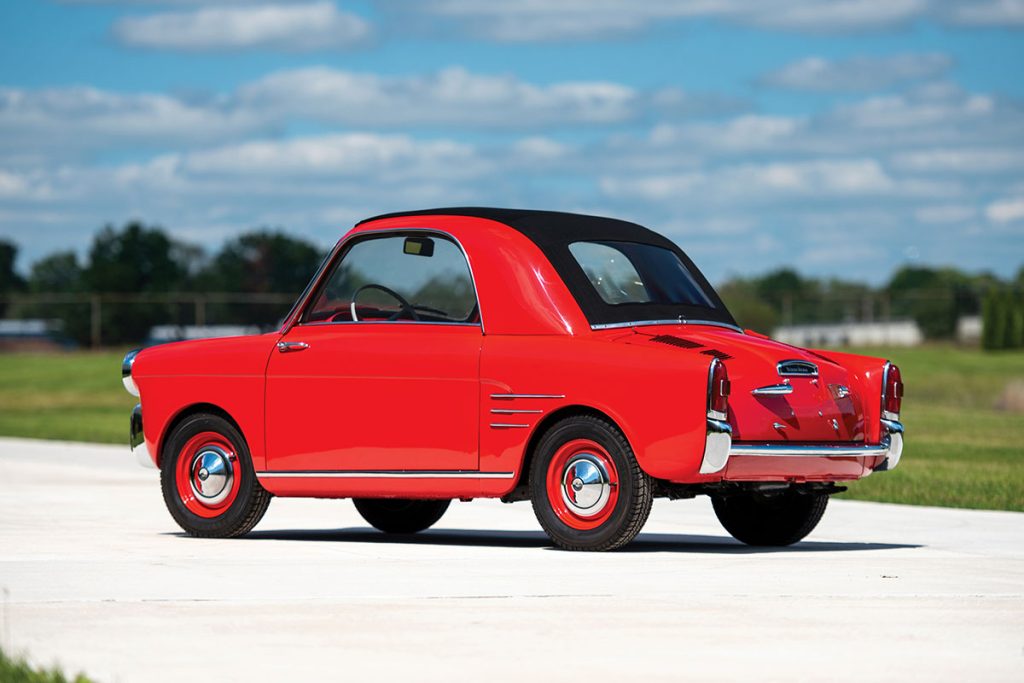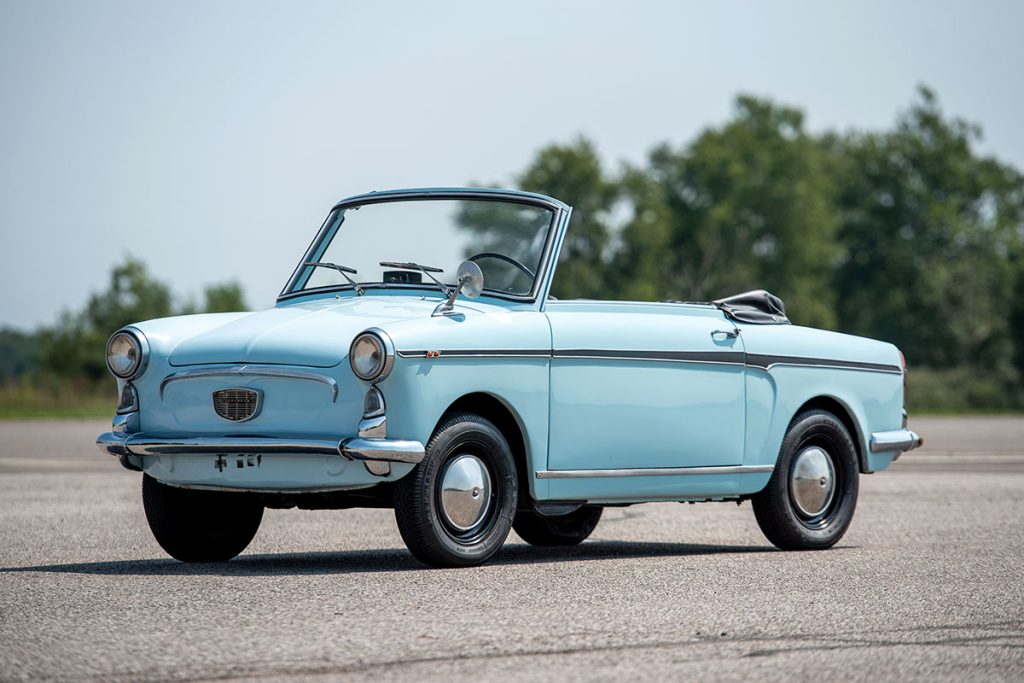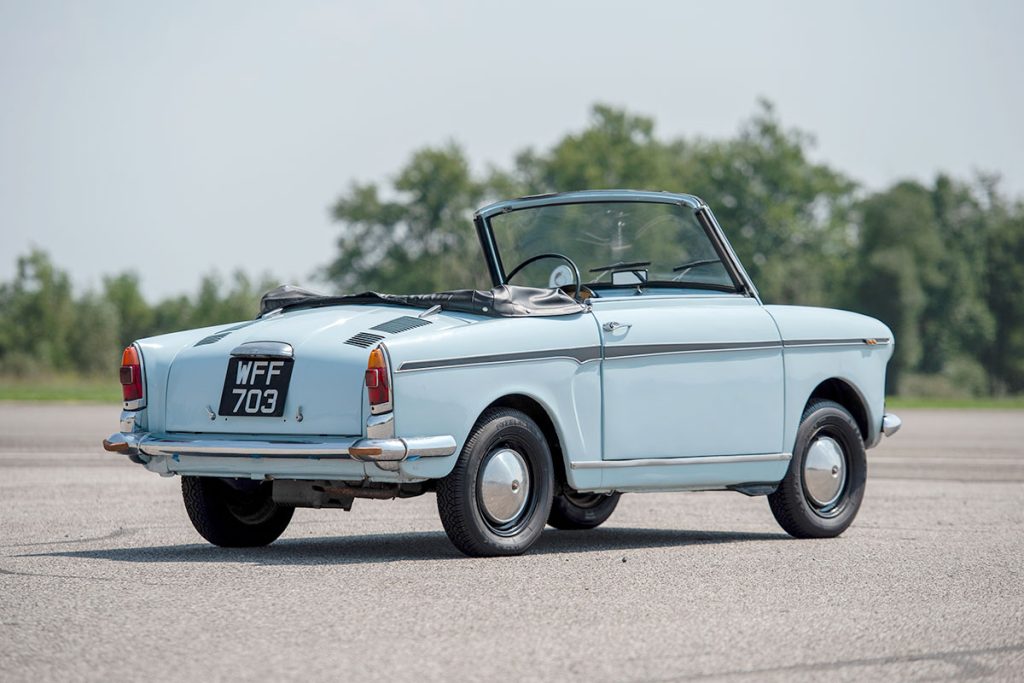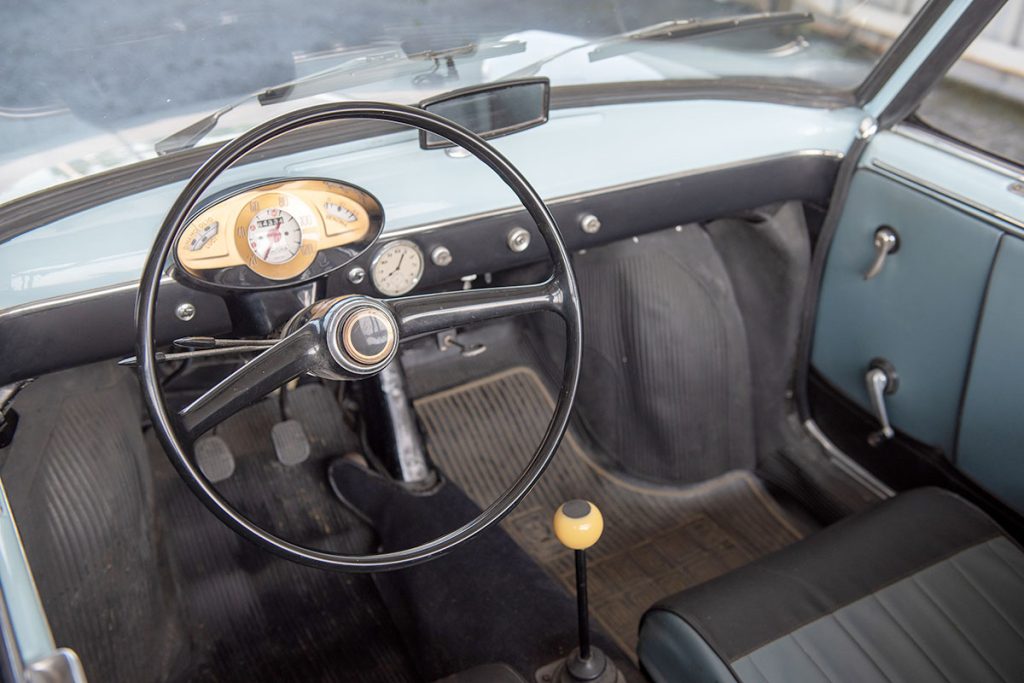Our latest Cars That Time Forgot candidate might look like a toy, but the Autobianchi Bianchina really was a full-sized car for adults, although it must rank as one of the cutest cars ever devised.
Edoardo Bianchi created a new company in 1897 to build motorcycles that bore his own name, and by the 1920s he was selling some of the most luxurious cars on the market. During the Second World War his factory was turned over to the production of army lorries, and by 1943 his premises were left in ruins by bombing raids. The company limped on in the post-war years, but in 1955 it gained a new lease of life thanks to a three-way partnership.

It was in the mid-fifties that Fiat and Pirelli teamed up with Bianchi to create Autobianchi. It was a chance for Fiat to move upmarket with a low-volume stylish small car, Pirelli would supply all of the tyres, and Bianchi was happy just to be back in the car-making game, with solid financial backing. It was a project that worked brilliantly too, and the company’s first car was the Bianchina.

As you’d expect, with Fiat underpinning Autobianchi, the cars were based on Fiat oily bits. The Fiat 500 donated its running gear to the Bianchina, which meant that there was initially a 479cc two-cylinder air-cooled engine in the back, which sent its 21bhp to the rear wheels via a four-speed non-synchro manual gearbox. If the Fiat 500 seemed on the lethargic side, the Bianchina was even more so (if only slightly), thanks to the greater weight of its bodyshell; it topped out at a leisurely 59mph, but it could return almost 60mpg.
The Fiat 500 also donated its all-round independent suspension, by upper wishbones, transverse leaf spring and telescopic dampers up front, while at the rear there were semi-trailing arms, coil springs and telescopic dampers. There was a drum brake at each corner, and the steering was by worm and sector. To underline just how small this car was, the two-seater cabriolet shown here was just 3020mm long, which is a mere 30cm longer than the current Smart ForTwo.
Luigi Rapi was the man who headed Fiat’s Special Vehicle Study Design Department, and he oversaw the design of Autobianchi’s first car. The Nuova 500 was launched in July 1957, and just two months later the Autobianchi Bianchina was first shown. Priced at a 20 per cent premium over the 500, the Bianchina came only in saloon form with a roll-back fabric sunroof, which is why it was marketed as the Trasformabile.


In a bid to justify its price premium, a few more horses were squeezed from the diminutive engine in 1959, taking peak power up to 25bhp in the Special Trasformabile; within a year this had been boosted even further to a monstrous 26bhp, with the adoption of the 500’s expanded 499cc engine. It was in 1960 that the range was expanded further with the introduction of the Bianchina cabriolet, as shown here, along with an estate derivative sold as the Panoramica. All were the same mechanically; it was just the bodywork that differed between the various models.
Throughout the sixties the Bianchina continued to evolve, with the four-seat Berlina replacing the Trasformabile in 1962, and the Furgoncino van making its debut in 1965. By this point Autobianchi’s model portfolio had expanded with the introduction of the pioneering Primula in 1964, and while that car blazed a trail for the family car it lacked the Bianchina’s cute looks and low price, being twice as expensive.

In 1969 the Bianchina was pretty much killed off, with the cabriolet, Berlina and Panoramica all being axed, along with the Furgoncino van in its original low-roof form. However, a high-roof van was introduced in this year and that remained in production right the way through to 1977, by which point around 275,000 Bianchinas had been made in all, about 60 per cent of which were Panoramica editions. The Bianchina was never brought to the UK officially, but there are a few here. If you can’t resist those cute looks you need to start looking online, where you’ll find plenty for sale, of pretty much every type.
Check out the Hagerty Media homepage for daily news, features, interviews and buying guides, or better still, bookmark it. Or sign up for stories straight to your inbox, and subscribe to our newsletter.










For those that both drive and ride, your eyes aren’t deceiving you, this is the same Edoardo Bianchi who founded the Bianchi bicycle manufacturing company in 1885.